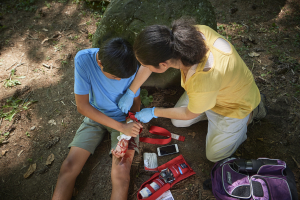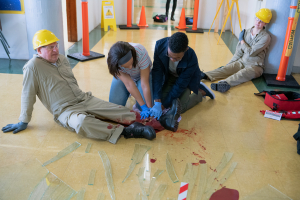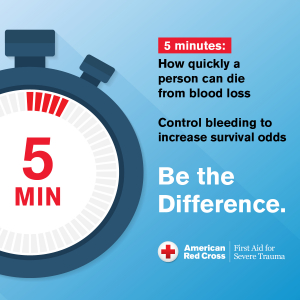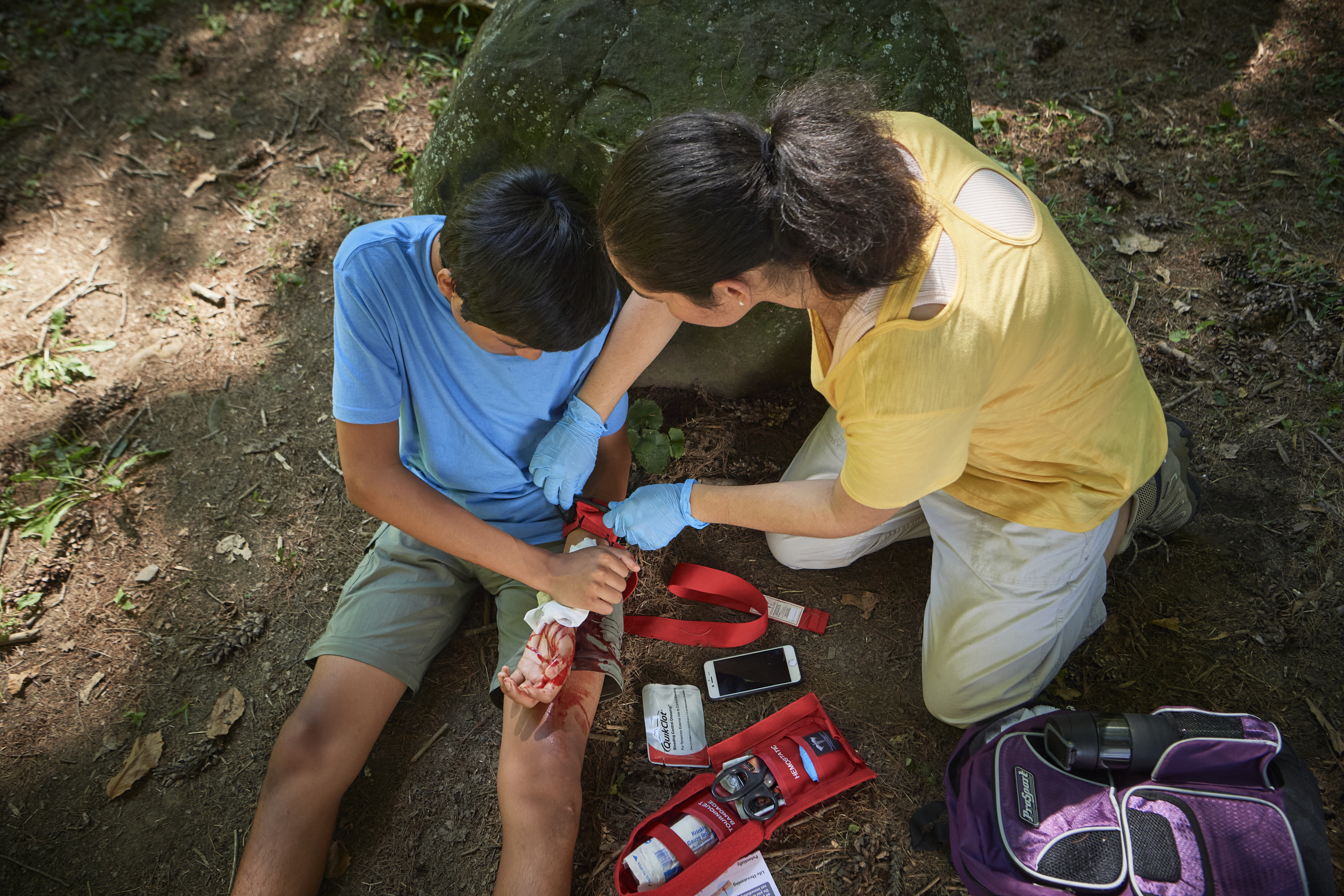 Today, more than ever, bystanders serve as immediate responders. They provide aid to save or sustain someone’s life before professional help arrives on the scene. The ability for layperson rescuers to communicate with each other, with 9-1-1 operators, and with responding EMS personnel can be lifesaving during the first few minutes after severe injury occurs.
Today, more than ever, bystanders serve as immediate responders. They provide aid to save or sustain someone’s life before professional help arrives on the scene. The ability for layperson rescuers to communicate with each other, with 9-1-1 operators, and with responding EMS personnel can be lifesaving during the first few minutes after severe injury occurs.
Those minutes are critical. According to the Centers for Disease Control and Prevention, the leading cause of death for people in the United States aged 1– 44 is traumatic injuries. This includes death from motor vehicle crashes, falls or homicides. Traumatic injuries kill more people than from any other cause, including cancer, HIV or the flu. In fact, death from blood loss can occur in less than five minutes. This is especially important in youth, where research suggests those who are prepared are more confident and feel empowered during an actual emergency.
Enter First Aid for Severe Trauma.
First Aid for Severe Trauma (FAST) is the first national Stop the Bleed course designed specifically for high school students. It is being developed with input, feedback and testing from teachers and students through a collaboration between the American Red Cross and the National Center for Disaster Medicine and Public Health. Thanks to grant support from the Department of Homeland Security Science and Technology Directorate, the course and digital materials will be offered at no charge to high school students under the age of 19.
FAST teaches bleeding control and other key topics designed to save a life after a severe bleeding injury.
Stakeholders designed the course curriculum to be straightforward, educational and empowering rather than frightening or overdramatized. An excerpt from the student manual shows what course takers will learn:
- You can save a life: Preparing for bleeding emergencies; recognizing that a bleeding emergency exists; emergency action steps; deciding to act in an emergency
- Safety in emergency situations: Keeping yourself safe in an emergency; helping others to safety; violent situations
- Communicating in emergency situations: Communicating with others at the scene and with the emergency dispatcher
- Caring for a person with life-threatening bleeding: Using pressure to stop bleeding; applying direct pressure; using a tourniquet; after the bleeding stops; applying direct pressure skill sheet; using a windlass rod tourniquet skill sheet; using a ratcheting tourniquet skill sheet
 “Historically, we have not taught many teenagers how to take care of someone with life-threatening bleeding injuries,” said Craig Goolsby, M.D., M.Ed., a former Air Force emergency physician. Goolsby serves as a professor and vice chair in the Department of Military and Emergency Medicine at the Uniformed Services University (USU) of the Health Sciences.
“Historically, we have not taught many teenagers how to take care of someone with life-threatening bleeding injuries,” said Craig Goolsby, M.D., M.Ed., a former Air Force emergency physician. Goolsby serves as a professor and vice chair in the Department of Military and Emergency Medicine at the Uniformed Services University (USU) of the Health Sciences.
Goolsby, who also works as science director for USU’s National Center for Disaster Medicine and Public Health, collaborated with the Red Cross on the FAST program content. During his military career, he observed lives saved because of the use of tourniquets in the field.
“We had a lot of capability to save lives at our field hospital. But we couldn’t do anything if the patient did not make it to us alive,” he stated. “Simple actions, like applying a tourniquet immediately after injury, kept soldiers alive to reach the hospital.”
It was that realization that crystallized his interest. He wanted to teach the public how to sustain someone suffering from life-threatening bleeding until care could be transferred.
Supporting career development in health sciences
Goolsby works alongside the career and technical students organization HOSA – Future Health Professionals to teach bleeding control at the high school level. CPR training is a high school graduation requirement in 38 states. Likewise, we hope to normalize bystander response in emergency situations and empower students to intervene.
Traumatic injuries can affect anyone at any time. As such, raising awareness and the ability to respond when life-threatening bleeding happens benefits the entire population.
Goolsby provided an example of why First Aid for Severe Trauma training is necessary. About 60 million people, or one in five Americans, live in sparsely populated, rural areas. If someone sustains an injury while camping, or at a farm or factory in a rural area, they could be hours from a hospital or emergency response. “A teenager with the skills to respond to life-threatening bleeding could be the difference between life and death.”

Carie Staub, MHS, LAT, ATC, is a health science and sports medicine instructor in Idaho. She also serves as the assistant director of competitive events for HOSA – Future Health Professionals.







